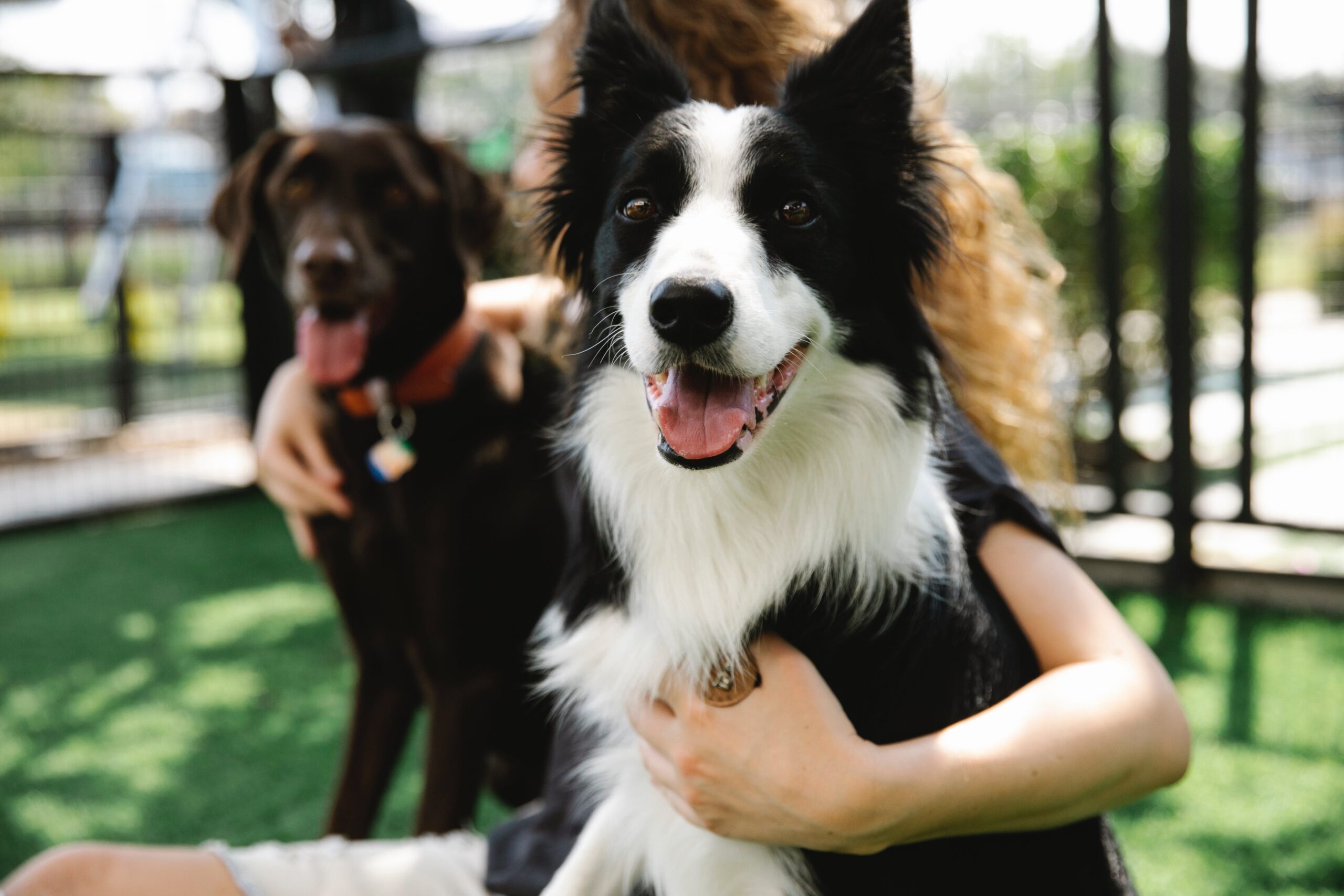It’s a beautiful, sunny Saturday afternoon. You and your dog are out for a walk in your neighborhood. So far, everything is going great.
Suddenly, up ahead, another dog comes around the corner with their owner in tow. You tense up—you know what’s coming next.
You can feel your dog becoming more anxious with every step, and their body language changes. As the other dog gets closer, your dog starts pulling on the leash, lunging in the direction of the approaching pair, and barking uncontrollably. You stand aside, holding your dog at bay, as the two walk by quickly.
Another peaceful walk is interrupted by your dog’s undisciplined behavior, leaving you wondering why.
This scenario might sound all too familiar for you—and if it does, you’re not alone. Many dog owners experience the same thing with their pets.
While you may think that your dog is being aggressive, or they just don’t like other dogs, the answer could be that your dog is reactive.
What is dog reactivity, and what causes it? We’re going to answer those questions for you in Part 1 of a two-part article series on the topic.
What is dog reactivity?
Dog reactivity is an unwanted and exaggerated response that dogs have when they encounter certain triggering stimuli, such as another dog, other animals or unfamiliar people. These responses typically involve barking, growling, lunging, whining, or even aggressiveness.
While some dogs show only mild signs of anxiety in these situations, other dogs may go into full panic mode during any encounter that sets off their reactive behavior.
Reactivity is a common behavioral problem that many dog owners deal with, especially in cities or urban areas where avoiding other dogs and people is challenging.
Whether mild or severe, reactivity can make it difficult for owners to take their dog on walks, be around other dogs or around groups of people.
What causes dog reactivity?
The causes of reactivity are often complex as the dog’s behaviors can be the result of many different factors. A lack of proper training, unintentional reinforcement by owners, genetic predisposition and past traumatic experiences can all be factors in dog reactivity.
However, pinpointing a definitive cause is difficult because their environment plays such a big part in a dog’s reactive behavior. A dog’s entire life needs to be evaluated before determining the cause, or causes, of their reactivity.
In many cases we see, dog reactivity is either learned behavior, fear-based anxiety, or frustration-driven. Let’s dive into each of those categories in more detail:
1. Learned Behavior — A dog can learn to be reactive through unintentional reinforcement by their owner. For example, when you and your dog walk past another dog, you pull on their leash with the intention of stopping your dog from reacting. What that leash pressure actually does is tell your dog that there’s something they should be concerned about—in this case, another dog. This can create or even worsen their reactivity.
2. Fearful Reaction — A dog can use reactivity to create a safe bubble for themselves from a perceived threat. When they bark, growl or lunge, other dogs go away so they believe they’re behavior is working. In many cases, dogs who react out of fear are protecting themselves because they don’t feel anyone is in charge of the situation. And, without a proper correction, there’s no way for them to know they’ve done anything wrong. This is why we emphasize training for owners as much as training for dogs.
3. Frustrated Reaction — When a dog is raised without structure in their lives, especially on walks, they will often display reactivity if that freedom is suddenly taken away. For example, ever since they were a puppy, you have allowed your dog to run up and greet every person and dog they see. When you start trying to hold them back during a walk on leash, they start barking and pulling in frustration.
Ultimately, the cause of every dog’s reactivity is different based on the unique set of circumstances that influence their behaviors every day.
How do you train a reactive dog?
Dog reactivity won’t go away on its own. In all likelihood, it will only get worse the longer it goes unaddressed.
So, how do you train your dog if they’re reactive? You have to start by looking at the entirety of your dog’s life, including your habits as a dog owner, to identify the causes of their reactivity and effectively change their behavior. It’s not easy, especially without extensive dog training knowledge and experience.
This is where a professional balanced dog trainer can make all the difference. At Koru K9, our trainers evaluate every part of your dog’s life to find out what areas need to be addressed so we can help you and your dog.
